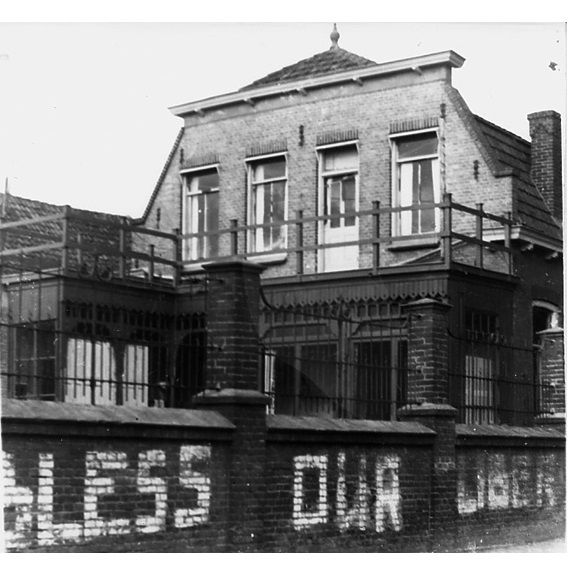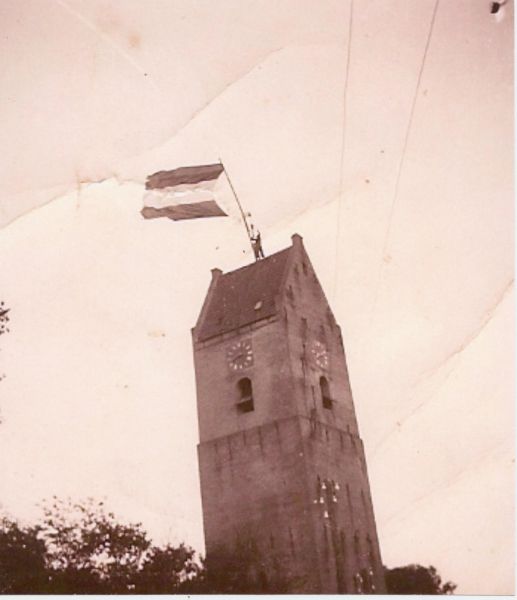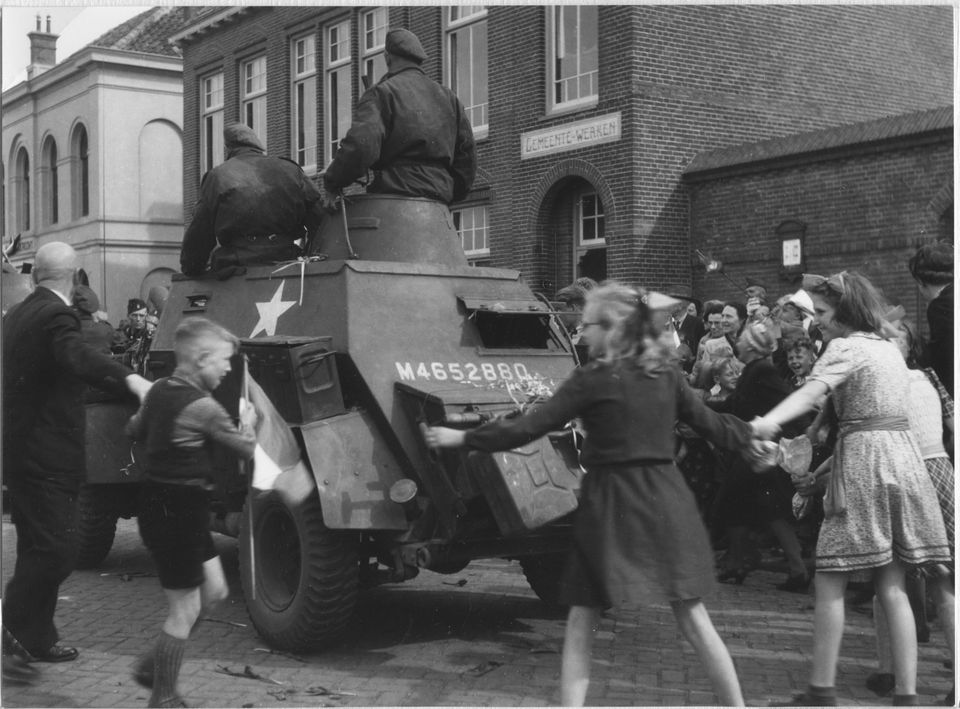Liberation
While the official liberation of the Netherlands was being celebrated on 5 May, this was not the case everywhere in the Wadden area. There were some parades, but they were under German supervision. The liberation of the Wadden area did not occur simultaneously and it was sometimes very chaotic.
The liberation of the Netherlands begins on 14 September 1944 in Maastricht. Thereafter, the allied forces liberate the southern provinces. Operation Market Garden on 17 September must create a bridgehead in Arnhem, but this fails. The Germans defeat the allied forces. In early 1945, they finally succeed in crossing the Rhine and form a bridgehead. The western part of the Netherlands suffers from hunger as a result of the food shortage, especially in the cities.
March to the north
It is the 2nd Canadian Army Corps that begins a march to the north on 28 March. They reach the borders of Friesland and Groningen in early April. On 15 April, the first Canadian units enter Leeuwarden. They are still fighting for control of the city of Groningen at this time. On 18 April, the city is liberated
To Delfzijl
The Canadians now advance towards Delfzijl. This harbour is important for delivering supplies and the attack on Emden. In Delfzijl and near Nansum and Termunten, there are heavy Flak batteries, the largest calibre stationed in the Netherlands: 12.8 cm. They protect Emden from air raids but the anti-aircraft artillery is also capable of firing at ground-level targets. Their reach in the air is nearly 15 kilometres, but exceeds 20 kilometres horizontally.
The battle of Delfzijl
The battle of Delfzijl lasts from 23 April to 2 May. 88 civilians, 102 Canadian and 185 German soldiers lose their lives in the battle. The villages in the area are severely damaged and people are forced to flee. Hundreds of people find refuge in Finsterwolde, which has already been liberated, and Winschoten.
To the Afsluitdijk
Canadian troops in Friesland march from Sneek, which is liberated on 15 April, to the Afsluitdijk. There was a battle here in May 1940 and now again in 1945. Kornwerderzand is a difficult hurdle to tackle. On 18 April, there is fierce fighting at Stelling Wons. German defenders perforate three Canadian armoured vehicles using anti-aircraft artillery. Five crew members are killed and three more are wounded. But in the end, the Canadian fire power proves to be superior and the Germans surrender. Stelling Wons falls, but the Canadians are still not able to cross the Afsluitdijk. They are unable to pass Stelling Kornwerderzand. They have to wait until 5 May.
Over the Afsluitdijk
After that date, the Canadians can prepare to pass the Afsluitdijk and liberate parts of North Holland. They are too late for the Wieringermeer residents. The occupying forces blew up the IJsselmeer dike on 17 April and flooded the polder. It was not until 8 May that three English armoured vehicles drove through Julianadorp into Den Helder. Not many people are cheering by the wayside, because the city has been depopulated. In front of the city hall, members of the Binnenlandse Strijdkrachten greet the Canadian liberators.
The islands
While people on the mainland are celebrating the liberation, the islands still have to wait. The islands are not a priority for the liberators. Disarming and deporting the German troops is postponed.
Transfer of power on Terschelling
On 17 April, the Inselkommandant on Terschelling has 12 residents imprisoned on suspicions of working with the resistance. The Germans are frightened by stories of retaliations by resistance members on the mainland. After 5 May, armed Germans still patrol the island and a few incidents do occur. The islanders have had enough of their presence, but so far, they get no help from the mainland. The Canadians figure they have done enough already. On 21 May, the first British and Canadian officers arrive on the island. The transfer of power is handled by English troops that arrive on the island on two ships on 29 May. The 1,200 Germans are disarmed and leave the island on several ships to Bremerhaven on 5 June. The occupying troops on Ameland sail to Terschelling on their own ships and are then transferred to Bremerhaven.

Retreat from Vlieland
On 31 May, British soldiers sail from Terschelling to Vlieland to disarm the local German troops and organise their retreat. On 3 June, the power is transferred and on 11 June the Germans sail to Terschelling and are then transferred to Bremerhaven.
Celebration on Ameland
The residents on Ameland saw the flag raised on the Holwerd tower. The relationship with the German soldiers had been the most cordial of all on this island. During the last year of the war, the soldiers had been relieved by older men. None of them were fanatical, so they knew they could start celebrating. The island may not have been liberated yet, but the war was over. Eyewitnesses recount how they saw Germans and locals celebrating together. Of course, the German soldiers want to go home. But they do not want to be disarmed by the Binnenlandse Strijdkrachten (NBS) on the island. According to the same eyewitnesses: ‘They were a bunch of misfits’. On orders of the allied supreme command, the NBS does take over civil authority on 11 May. On 3 June, the allied forces arrive and the German troops leave the island, sailing via Terschelling to Bremerhaven.

Scholtenhuis on Schiermonnikoog
Things go rather differently on Schiermonnikoog. On 15 April 1945, when troops are still fighting heavily for the city of Groningen, 125 members of the Sicherheitsdienst and the Sicherheitspolizei manage to escape from the feared Scholtenhuis and out of the city. Those who ended up in the Scholtenhuis were tortured and most did not survive their stay there. Members of the SD and SS use boats to cross the Wad to Schiermonnikoog, where they are less than welcome. The Inselkommandant lets them camp at the kooiboerderij, far outside the village. They are wary of possible problems with these people who have a horrendous reputation. As a safety measure, he orders one of the cannons to be aimed at the farm. If the men from the Scholtenhuis cause problems, the farm will be fired at.
Last part of the Netherlands is liberated
On 25 May, the first Canadians arrive on the island. The men from the Scholtenhuis are taken away on 31 May. Although the German occupying troops are still present on the island, the residents celebrate on 1 June. On 11 June, the 600 German military men leave by ship and the last bit of the Netherlands is finally liberated.


